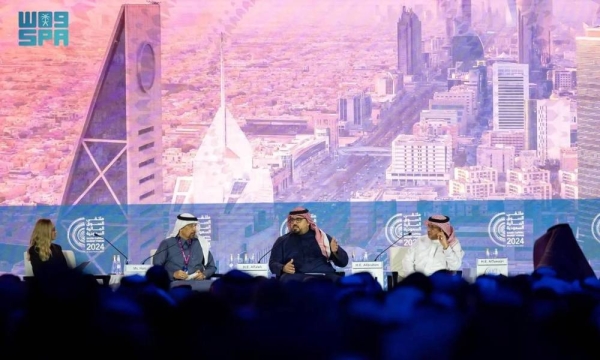
US company building is helping regional countries reduce dependence on traditional sources of energy
RIYADH: A leading US solar power company is building several renewable power plants in Saudi Arabia and other countries in the Middle East as part of efforts to reduce dependence on traditional and costly sources of energy and decrease carbon emissions.
“We were fortunate to win our first 405-megawatt project in Saudi Arabia which we secured in 2018. This project has become a flagship in the Kingdom and this is really an example of a solar tracker project with excellent performance,” Marco Garcia, chief commercial officer at Nextracker, told Arab News.
Nextracker was also selected to provide its smart solar trackers and TrueCapture technology for phase one of the Sudair Solar PV Plant (450 MW), Saudi Arabia’s largest solar power plant currently under construction in Sudair.
When complete, it will provide clean energy to meet the needs of 185,000 homes and reduce carbon emissions in the Kingdom by 2.9 tons annually, according to the company.
The Sudair Solar PV IPP Project is developed by Saudi Arabia’s Public Investment Fund (PIF) through its subsidiary Badeel/WEHC, Saudi Aramco and ACWA Power.
“The consortium partners have entrusted the Engineering, Procurement and Construction contract with the renewables arm of global construction giant Larsen & Toubro (L&T),” according to the company.
“The use of local manufacturers for Sudair’s steel production needs will also have significant economic impact,” Garcia said.
Nextracker works with local Saudi steel manufacturing partners for the installation of domestic solar projects as well for steel export to support the development of solar projects around the world.
He stressed that this project in Saudi Arabia has created more than jobs in the Kingdom. “Not only was there were additional job creation, we are using Saudi made steel tubes and trackers that were made in the Kingdom by our partners. So that’s very exciting. In addition, there’s technology with bi-facial modules that will be mounted on the Sudair tracker project,” Garcia explained.
In 2021, Nextracker exported more than 20,000 tons of Saudi steel valued at more than SR112.5 million ($30 million) to help support the installation of the company’s NX Horizon and NX Gemini smart solar trackers at new solar plants in numerous countries, including the US.
It also used local steel manufacturers for all steel required to support the installation of Nextracker solar trackers and technology at the 405 MW Sakaka Solar Plant in Al Jouf, which was also developed by ACWA Power and consortium partners.
Nextracker, which is considered the leading company in the world in terms of solar power plants, has been steadily expanding its operations in many Arab countries such as the UAE, Kuwait, Jordan and Egypt.
“We’ve been in business now nine years and we have achieved over 60 gigawatts of solar tracker projects around the world,” Garcia pointed out.
Although Nextracker was founded in 2013 only, it nevertheless focused on the Middle East region in 2016 and 2017 and managed to sign several contracts to build solar power plants in these countries.
“We will also deploy true capture software, which is an energy enhancing software that allows us to produce more energy. Eliminating row to row shading in the morning and afternoon, and also performing, producing more energy during diffuse light hours,” Garcia informed.
He was not able to comment on the actual cost of the two projects in Saudi Arabia.
The company’s executive stressed that the desert climate in some parts of the Middle Eastern countries allow the solar trackers to work perfectly well.
“So, when you have a desert landscape with light colored sand, the light bounces off, off the ground and hits the backside of the bi-facial modules and produces more energy,” Garcia added.
He also pointed out an important project that the company is doing in Dubai.
“We’ve already deployed the first third of that project. So about 350 megawatts that’s already deployed,” Garcia said.
He added that Europe, for example, is gradually trying to reduce its dependence on Russian gas through investing in renewable energy but admitted that it’s difficult to estimate when full reliance on solar power in this continent can be achieved.”
“And I do believe that Europe, let’s say, significantly reduced its dependence on Russian natural gas. How quickly that can happen, remains to be seen. But it’s exciting for the solar power industry. We will have more opportunities to deploy renewable energy in Europe,” Garcia said.










